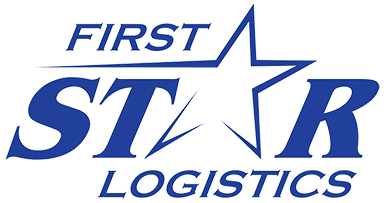The term “logistics” refers to the process of managing how goods or resources are handled and transported. Logistics involve many carefully coordinated operations. One important step in logistics is drayage. It is important to fully explain the drayage definition because drayage plays a vital role in the supply chains of a multitude of industries.
Drayage Meaning and Characteristics
When freight is transported long distances it typically travels on container ships, airplanes, and trains. These long distance transportation methods do not connect directly with the businesses, warehouses, factories, or distribution centers that the freight needs to reach. Short distance transportation is needed to access those destinations.
Drayage is the specialty service of transporting goods over short distances between the long hauls of the shipping journey. Drayage is an integral part of the supply chain process, and it has specific characteristics that set it apart from other modes of transportation. In drayage, the pick-up and delivery locations are usually within the same city or municipal area. Only one driving shift is typically needed for drayage. Drayage is typically one component of an extensive shipping process.
Drayage and Intermodal Shipping
Intermodal shipping involves two or more modes of transportation to move freight. Standardized shipping containers are typically used for intermodal shipping so that freight can easily transfer from ship or railway to truck and back. Drayage is a key step in the intermodal shipping process. Through drayage, places such as warehouses and distribution centers can connect with transportation hubs such as ports and railway stations. To learn more about intermodal shipping, read “What is Intermodal Trucking: A Simplified Guide.”
1. Drayage Classifications
There are several different types of drayage. The Intermodal Association of North America organizes drayage into the following six categories: intra-carrier, inter-carrier, door-to-door, shuttle, pier, and expedited.
2. Inter-Carrier Drayage
Inter-carrier drayage describes moving freight between different types of transport. For example, hauling freight a short distance between long haul trucks and a railway is considered inter-carrier drayage.
3. Intra-Carrier Drayage
Intra-carrier drayage describes transport between terminals that are controlled by the same carrier.
4. Door-to-Door
Door-to-door drayage refers to the direct, driven transportation of cargo to the recipient. Door-to-door drayage is common for retail customers who receive high volumes of goods in container ships.
5. Shuttle Drayage
Sometimes transportation hubs reach capacity and there is not any space for additional freight. In shuttle drayage, cargo containers are taken to a parking lot to await further transportation. This happens with both loaded and empty containers and is a strategy for managing hub capacity.
6. Pier Drayage
Pier drayage describes the driven transport of freight from a rail hub to a dock or pier. Highways are typically used to reach the piers.
7. Expedited Drayage
Expedited drayage means that time- or materially sensitive freight is quickly and efficiently transported. Temperature controlled freight benefits from the swift delivery of expedited drayage. Expedited drayage typically occurs via road transport.
Brief History of Drayage
Throughout the 1800s and into the early 1900s, horse-drawn carriages transported freight where ships and trains did not reach. Horse-drawn carts are called “drays.” Drays were typically flat beds that were low to the ground and did not have side walls. Drays hauled heavy boxes of goods to and from warehouses, seaports, canal docks, and railroad terminals. The physical capabilities of the horses determined the travel distance, which was relatively short with the heavy loads. The term and concept of “drayage” stems from this history.
Who needs drayage?
According to the Intermodal Association of America, 95% of all manufactured goods worldwide travel by drayage at some point in the supply chain process. Manufactured goods include almost everything we interact with on a daily basis. When these items, their components, or raw materials are transported in large quantities, drayage is most likely a part of that journey. Manufacturers, wholesalers, retailers, and more rely upon drayage for delivery of freight.
Coordinating freight logistics is a high-stakes, complex process. Drayage and intermodal transport involve detailed planning, negotiations, scheduling, and tracking. Specific permits and licenses may be required. Strong carrier relationships are key to booking reliable transport and resolving any transit challenges that may arise. Managing the logistics can be a nightmare for manufacturers, wholesalers, or retailers who are unfamiliar with the process.luckily there is a global logistics company that can coordinate all of your freight transportation.
First Star Logistics is an asset-based logistics provider with over 60 years of experience. As an industry leader and innovator, First Star Logistics is an expert at ensuring cargo arrives on time and in perfect condition. To learn more about drayage, and hand your logistics over to a trusted provider, visit the First Star Logistics website today.



